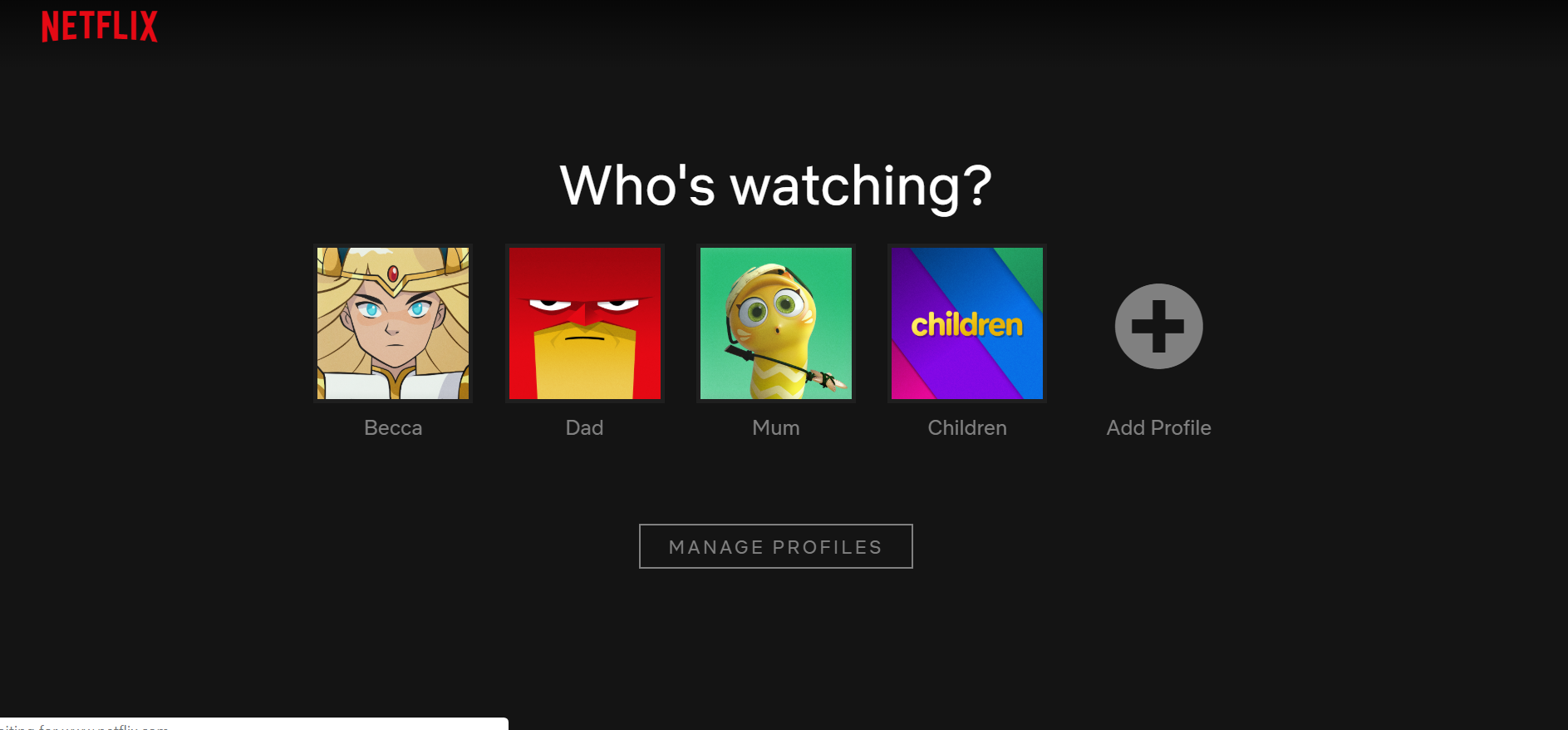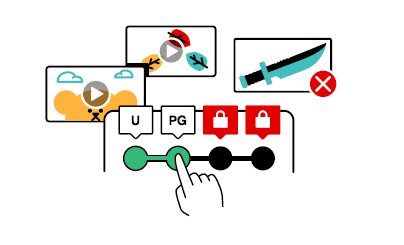Netflix have launched an update to their parental controls. Netflix have updated these settings to help families around the world get the most from their viewing experience, as well as allowing them to make decisions about what content is right for their family. This blog looks at these new controls, and how parents and carers can use them with their family.
With over 5,052 TV shows, documentaries and movies currently on Netflix in the UK, there is a lot of great content that young people can use to learn from, engage with or use just to to relax with. The sheer number of titles on Netflix does however mean that there is some content that is not appropriate for all users to watch, with some films and TV shows age rated as 15 or 18.
What are parental controls?
Parental controls are designed to help protect children from inappropriate content they may come across online. These controls can be used to restrict access to age-inappropriate content, to set usage times and to monitor activity. On Netflix specifically, parental controls are available to restrict what young people can watch, as well as to see what young people have been watching.
It’s worth being aware that no parental controls or filtering options are 100% effective. As children grow up, they can become quite tech-savvy and this could mean that they learn how to disable or by-pass parental controls.
With parental controls, it’s important to remember to keep passwords private from your children – sharing it may mean they can turn off or modify the parental settings which you have put in place.
Before you implement or change your parental control settings have a conversation with your children, talk about why you are doing this and what it means for their internet use. Use this as an opportunity to talk to them about the way they spend their time online and the things they may see online.
What the new updates includes
PIN protected profiles
When you log into your Netflix account on a computer, tablet or TV you come to a screen which asks you to select your profile. Each profile has its own name, profile picture and content which is age appropriate to the viewer.

OUR ADVICE– This is great if you have children of different ages and you want to restrict different things for them!
In the latest update you will now need to enter a four-number pin code to access each profile. This can help ensure that only the person who the profile is set up for can view the content on it, stopping younger children or teenagers from going on their parent’s accounts to view films or tv shows intended for older audiences.
Each profile will have a different pin, and the parent or carer who has created these settings can lock or unlock the profiles on your account. To do this:
- Go to Netflix.com/account and log in to your Netflix account.
- Scroll down to ‘Profile & Parental Controls’ and click on the arrow next to the name of the profile you want to lock.
- Change the Profile Lock setting.
- Enter your Netflix account password on the screen.
- Tick the box that says ‘Require a PIN’ to access the selected profile. (if you need to remove the PIN requirement, untick the box).
- Enter four numbers into the PIN field. This will be your Profile Lock PIN.
Stop children bypassing these settings by adding a new profile to your account without entering a PIN. Select Require PIN to add new profiles. - Select Submit.
Apply new filters or Restrict specific title(s)
 There is a wide range of shows and movies on Netflix, not all of which is suitable for all ages of viewers. Netflix have announced new ways you can control the types of shows that your children watch, and ways in which you can stop them from watching specific shows you don’t think are appropriate. You can search and select specific titles that you don’t want available to your child.
There is a wide range of shows and movies on Netflix, not all of which is suitable for all ages of viewers. Netflix have announced new ways you can control the types of shows that your children watch, and ways in which you can stop them from watching specific shows you don’t think are appropriate. You can search and select specific titles that you don’t want available to your child.
When setting up the age restrictions you can choose based on the age that is most applicable for your children. The options are U, PG, 12, 15 and 18. Remember that this is the oldest age rating that they will be allowed to watch, so for example picking 12 will allow your child to watch shows and films rated 12 and below.
To do this:
- Go to Netflix.com/account.
- Scroll to ‘Profile & Parental Controls ’and click on the profile you want to manage.
- Click ‘Change’ next to the Viewing Restrictions setting.
- Enter your Netflix password.
- Set the maturity rating for the programmes and films you want to allow in that profile.
You have the options of U, PG, 12, 15 and 18. - Under Title Restrictions, type the name of the title and click the title when it appears. You will see a list of restricted titles listed in red.
- Select Submit.
OUR ADVICE: There might be a specific show that you really might not want your child to see because it’s around an issue or topic that you feel is upsetting even if the age rating says it is ok. Have a conversation with them and explain why and come to a shared understanding. You can always review it a later date.
Disable auto-play
Netflix has a setting called ‘autoplay’ where once you have finished an episode of a show the next one plays automatically after a 10 second countdown. This allows users to easily watch more episodes of the show and can lead to many people spending more time watching than they initially intended.
You can now turn this feature off :
- Go to Netflix.com/account.
- Scroll to Profile & Parental Controls settings.
- Click on the profile which you want to turn off autoplay for.
- Click Playback settings.
- Tick or untick the option to autoplay next episode in a series on all devices.
- Select Save.
If you wish to turn autoplay back on, simply enable this setting at any time for the desired profile by revisiting the parental controls as above.
Looking at viewing history
By looking at your child’s viewing history you can see what has been viewed on each of the profiles and on which date. This can help you to monitor what shows your child is enjoying, as well as seeing how many shows or movies they are watching each day. This can be a great way of starting a discussion about the types of things you children like to watch. To do this:
- Go to Netflix.com/account.
- Scroll to Profile & Parental Controls settings.
- Click on the profile you want to check the history of.
- Click ‘Viewing activity’.
Viewing activity will show you all of the titles, and when they were streamed for that profile. Use the Show More button to load additional titles if you are seeing a limited list.
Further things you can do
Have an ongoing conversation
Parental controls can be helpful, but they are not a replacement for ongoing discussion and involvement with your child’s online life. Watch shows together, talk about their favourite things to watch and play a part in your child’s decision-making process when they want to start a new series.
When it comes to parental controls it’s important to strike a balance that woks for your whole family. By having these conversations you can help make sure that your whole family work together to get the most out of the online world.
We have some conversation starters to help you to start this discussion with your child.
Make a Family Agreement
Consider making a Family Agreement. This is a great way to start a conversation with your whole family about how you all use the internet and to discuss how to behave online in a positive way. If Netflix is popular in your family, you could include a specific section in your agreement to talk about it.
See what other parents are saying
If you have questions about a specific movie or show on Netflix, you can see what other parents and young people are saying about it – as well as see content flags to be aware of – on Common Sense Media.


